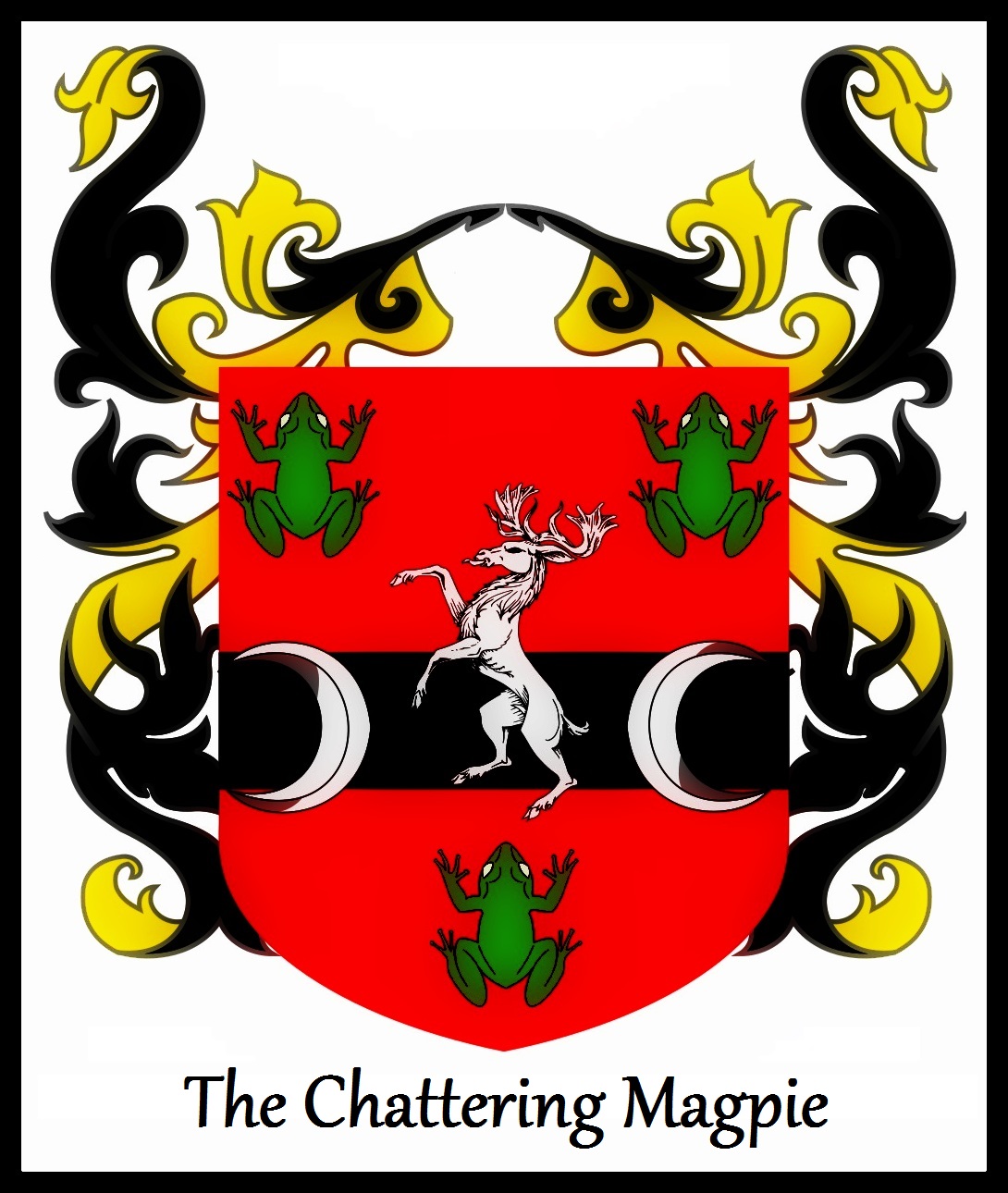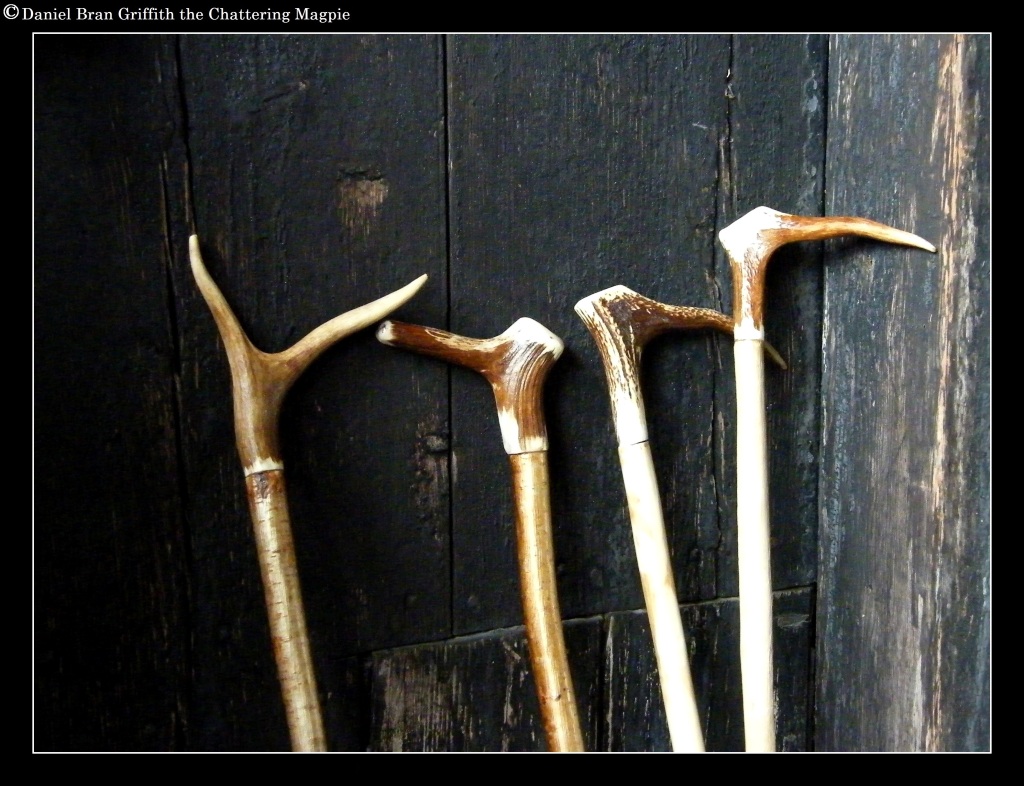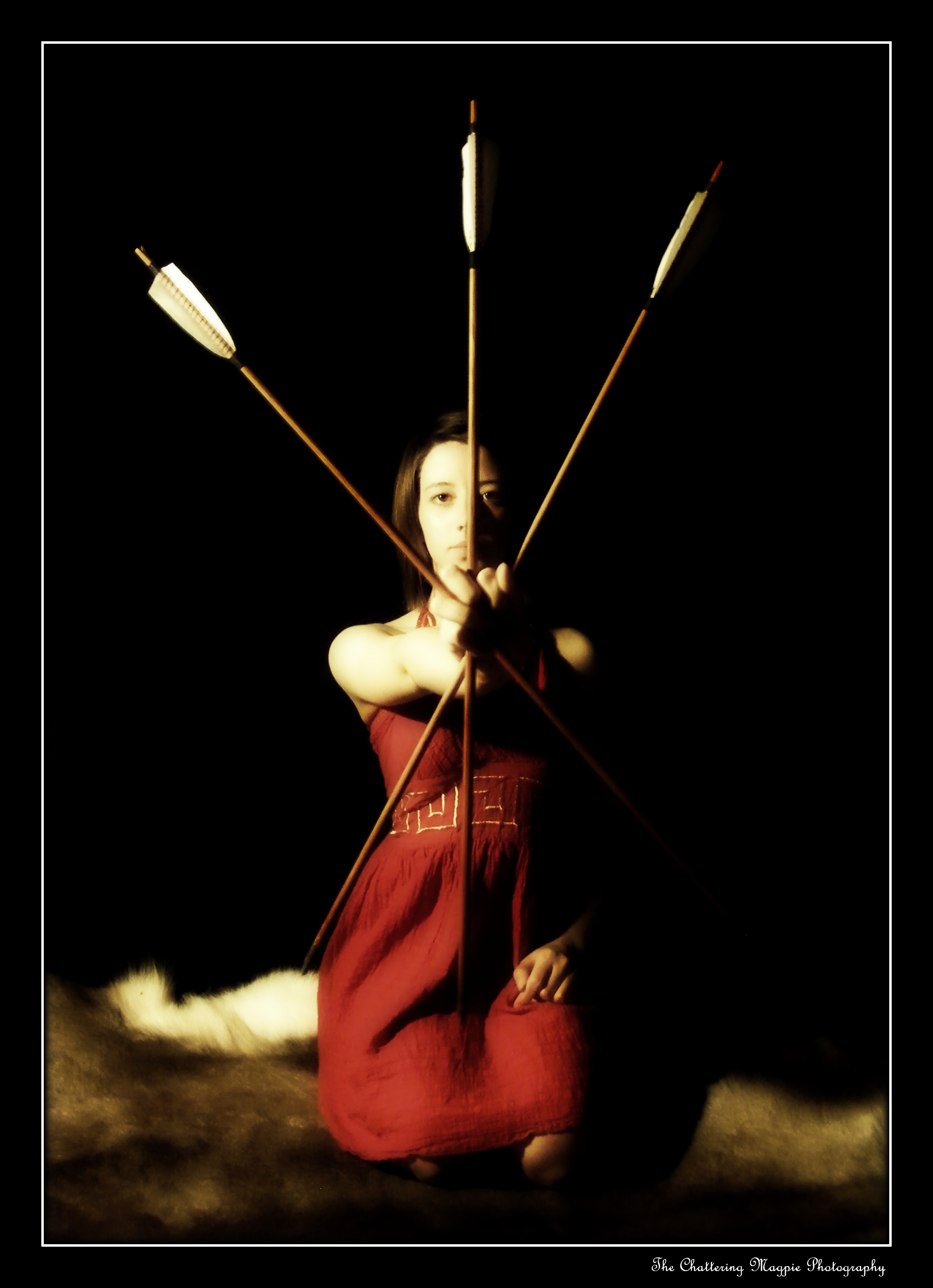Introduction to the ritual
If guests are present the Robin will say a few words of welcome and mention ritual etiquette. Roles for this ritual will be: the Robin and the Marion (acting high priest and priestess), the four officers of the quarters and the Oak King. Requirements are, a cauldron with a candle inside, a cauldron containing water, a wreath or crown of oak and a small branch of holly.
Introduction to the Sabbat (Kipling 1906)
‘See you the dimpled track that runs,
All hollow through the wheat?
O that was where they hauled the guns,
That smote King Philip’s fleet!
See you our little mill that clacks,
So busy by the brook?
She has ground her corn and paid her tax,
Ever since Domesday Book.
See you our stilly woods of oak,
And the dread ditch beside?
O that was where the Saxons broke,
On the day that Harold died!
See you the windy levels spread,
About the gates of Rye?
O that was where the Northmen fled,
When Alfred’s ships came by!
See you our pastures wide and lone,
Where the red oxen brouse?
O that was a City thronged and known,
Ere London boasted a house!
And see you, after rain, the trace,
Off mound and ditch and wall?
O that was a legions camping place,
When Caesar sailed from Gaul!
And see you marks that show and fade,
Like shadows on the Downs?
O they are the lines the Flint Men made,
To guard their wonderous towns!
Trackway and camp and city lost,
Salt Marsh where now is corn.
Old wars, old places, old arts that cease,
And so was England born!
She is not any common earth,
Water or wood or air.
But Merlin’s Isle of Gramarye,
Where you and I will fare.’
Casting of the circle (Kipling 1906, Griffith 2008)
‘We call Oak and Ash and Thorn,
To bless our circle drawn.
We call Oak and Ash and Thorn,
To guard our circle drawn.
Of all the trees that grow so fair,
Greater are none beneath the Sun,
Than Oak and Ash and Thorn.’
Blessing of the elements (Griffith 2005)
Light the incense, using wand, athame or hand bless and say the charm of blessed fire (Schulke 2005):
‘Leaf of burning bush I call, flame that bears the Angels voice upon the wind, by Sun and Moon and Heavens between I charge thee: burn all enemies to ash and perfume this House of Worship. With sword of Fire and Watchful Eyes, I raise this House in the Hedge of the Wise.’
One shall say the charm of the blessed salt (Schulke 2005 and optional if using seawater):
‘Dust of Sodom’s Apple I call, ye poisoned desert soot, by Sun and Moon and Heavens between I charge thee: gall the tongues of enemies all and fix ye fast this holy ground. With Salt of Earth and Wilful Guise, I raise this House in the Hedge of the Wise.’
One shall say the charm of the blessed water (Schulke 2005):
‘Waters of the Reed I call, thou well of silent deep, by Sun and Moon and Heavens between I charge thee: wash clean this place of enemies and flow as the Font of Life. By Dew-pool’s calm and wrathful Skies, I raise this House in the Hedge of the Wise.’
Three pinches of salt are then added to the water (if not using seawater) and the mixture is then sprinkled at each quarter starting in the east and proceeding deosil, saying at each quarter (Jones 1994): ‘With water and salt the symbol of our labour. I cleanse and bless this place in the name and power of the Goddess our Lady of the night.’
Carry the incense about the circle and say (Jones 1994): ‘I scent this circle with air and warm this circle with fire, in the name and power of the God our Lord of the Greenwood.’
One shall bless the anointing oil (Schulke 2005): ‘Powers of the Cross of Unction, by the Temple-Cedar and Tree of Anointing. I pour out the Blessing of the Father and the Mother, go forth in flesh as the Oil of Mercy.’
Each person will anoint the person to their left with a runic symbol while saying: ‘You have walked this path in spirit (and) now (you) do so in flesh.’ Please note that the words in brackets are optional.
For an Equinox or a Solstice the HTW use one version of the Sun rune:
Druid oath (Anon)
All link hands once more to say the Druid Oath: ‘We swear by love and peace to stand. Heart to heart and hand in hand. Mark O’ Spirit and hear us now. Confirming this our sacred vow.’
Hallowing the compass (Griffith 2008).
All turn to face east, salute the quarter and one person say:
‘Hail and welcome, ye spirits of air.
The breath of life and power to know,
It is in thy powers that we share,
And with thy blessing we shall grow.’
All: ‘Hail and welcome.’
All turn to face south, salute the quarter and one person say:
‘Hail and welcome, ye spirits of fire.
Of flesh and body, the power to will,
It is our spirits souring higher,
Towards a centre that is still.’
All: ‘Hail and welcome.’
All turn to face west, salute the quarter and one person say:
‘Hail and welcome, ye spirits of water.
The inner tides and the power to dare,
Shine upon us, Luna’s blessed daughter,
Guide our lives and our care.’
All: ‘Hail and welcome.’
All turn to face north, salute the quarter and one person say:
‘Hail and welcome, ye spirits of earth.
Of blood and bone, the power of silence,
Place of reflection and rebirth,
The past, the present and what is hence.’
All: ‘Hail and welcome.’
Elemental invocation (Cunningham 1988)
All present say in unison: ‘Air, Fire, Water, Earth, elements of astral birth, We call you now attend to us. In the circle rightly cast, safe from psychic curse or blast, we call you now attend to us. From cave and desert, sea and hill, by blade, wand, cup and pentacle, we call you now attend to us. This is our will so mote it be.’
Invocation of the Goddess and God as Fairy Queen and King
Robin invites the Queen of Fairy (Anon 17th cen.):
‘Come follow me, come follow me,
Your fairy elves that be;
And circle round this green,
Come follow me, your Queen.
Hand in hand let’s dance a round.
For this place is fairy ground.
Queen Mab, intoxicating faerie of light,
Come with us on this holy night.’
Marion invites the King of Fairy (Simon Steward 1635):
‘His belt was made of myrtle leaves,
Pleyted in small curious theaves,
Besett with amber cowslip studdes,
In which his bugle horne was hunge.
Made of the Babling Echoes tongue,
Which sett unto his moone-burnt lippes,
Hee windes and then his fairies skippes.
King Oberon, merry faerie of mirth,
Come with us on this rituals birth.’
Additional invocation (Shakespeare)
The Robin and Marion face each other while joining their right hands at approximately eye level and say together:
‘For thou art spirits of a different sort,
And with the mornings’ love have oft made sport.
And, like a forester, the groves may tread,
Even til the eastern gate, all fiery red.
Opening on Neptune, with fair blest beams,
Turns into yellow gold his salt green streams.’
Main focus
Solstice invitation: ‘We approach the time when daylight reigns. The Sun God rules strong in his manhood and the land is bathed in glory. Our Gods stand together and as one nurture our land. The grain ripens, the fruit swells, the earth is fertile and full. On this night as the solstice approaches, we ask the Lord and Lady to join us. Blessed be.’
All: ‘Blessed be. ‘
Sabbat prayer by R Beth: ‘Great lady and lord of the golden sun and golden days on earth and the heart’s fulfilment, I call upon you. Let all be blessed with a sense of beauty of this earth and all her creatures. Help us to celebrate love for one another and for all life. And help us also to put to flight forces that oppress love and deny justice. Make us strong in magic, make us like summer trees, make us like summer stars, make us like summer seas. In dedication to the vision of untamed peace, set us free.’
Marion or Robin will plunge the wand or their own athame into the cauldron of water and say: ‘The knife to the cup, the rod to the cauldron, the sun to the earth and the flesh to the spirit.’
The Marion or Robin will light the candle in the cauldron and say: ‘Lord of heaven and power of the sun, we invite your presence as lord of greatest light. now is the time of your glory and power. Place your shield between us and all power of darkness. Shoot forth your arrows of light to protect us and grant to us at this time green fields and good hunting. Give us orchards of fullness and wheat that has risen high. Show to us within the time of splendour a path to peace.’
A crown of oak leaves is placed upon the Oak King and one person will say: ‘Crowned is the Sun King giver of life. Let his light be strong. Let his warmth feed the earth. ‘
All: ‘Crowned is the Sun King giver of life.’
A single branch of holly is presented to the Oak King who then says: ‘Now is the time of the sun and I the Oak King reign at the height of my power and glory. Yet the wheel must turn and soon we will approach the time of the Holly King and the coming of winter.’
The two cauldrons should have been placed so that the ‘candle ‘ is near the altar and the ‘water ‘ is near the edge of the circle. Now all present may process deosil around the circle passing between the cauldrons. The Lady (water) cauldron on their left and the Lord (fire) cauldron on the right. People may anoint themselves with the holy water and pass their hands (right) over the fire cauldron.
As this takes place the Robin sings:
‘Hail fair Moon ruler of the night,
Guard me and mine until the light.
Hail fair Sun ruler of the day,
Rise on the morn to light our way.’
When this is done the Sabbat blessing by G Duff will be spoken by the Oak King: ‘The solstice is: sweet rain and green grass, hot sun and growing crops, birdsong and flowers, fertility and growth. The scent of herbs and the taste of strawberries. The swelling of fruits and the spreading of leaves, warmth and strength, passion and love. The fulfilment of wishes and the beginning of dreams. May your dreams come true this solstice, blessed be.’
The rite of communion
The chalice (Shakespeare): ‘Herein lies wisdom, beauty and increase, without this, folly, age and cold decay.’
The plate (Shakespeare): ‘From fairest creatures we desire increase; that thereby beauty’s rose might never die.’
Drink first, and as the cup is passed to the person to your left say: ‘May you never thirst.’
Take a biscuit and as the plate is passed to the person to your left say: ‘May you never hunger.’
(Time for talking stick).
Closing (Geddes-Ward A. Geddes Ward N. 2005)
Marion:
‘King of the Faerie, blest hast thy presence been,
May ye return to Elphame,
Until we meet again, blessed be.’
Robin:
‘Queen of the Faerie, blest hast thy presence been,
May ye return to Elphame,
Until we meet again, blessed be.’
Farewell to the compass (Griffith 2008)
All turn to face north, salute the quarter and one person say:
‘Hail and farewell, ye spirits of earth.
Of blood and bone, the power of silence,
Place of reflection and rebirth,
The past, the present and what is hence.’
All: ‘Hail and farewell.’
All turn to face west, salute the quarter and one person say:
‘Hail and farewell, ye spirits of water.
The inner tides and the power to dare,
Shine upon us, Luna’s blessed daughter,
Guide our lives and our care.
All: ‘Hail and farewell. ‘
All turn to face south, salute the quarter and one person say:
‘Hail and farewell, ye spirits of fire.
Of flesh and body, the power to will,
It is our spirits souring higher,
Towards a centre that is still.’
All: ‘Hail and farewell. ‘
All turn to face east, salute the quarter and one person say:
‘Hail and farewell, ye spirits of air.
The breath of life and power to know,
It is in thy powers that we share,
And with thy blessing we shall grow.’
All: ‘Hail and farewell. ‘
Hymn to Pan by John Fletcher (1919) to be spoken by the Oak King:
‘SING his praises that doth keep
Our flocks from harm,
Pan, the father of our sheep ;
And arm in arm
Tread we softly in a round,
Whilst the hollow neighbouring ground
Fills the music with her sound.
Pan, O great god Pan, to thee
Thus do we sing !
Thou who keepst us chaste and free
As the young spring :
Ever be thy honour spoke
From that place the morn is broke
To that place day doth unyoke! ‘
Closing #1 (Tolkein)
The Robin and Marion face each other while joining their right hands at approximately eye level and say together:
‘We will remember, we who dwell,
In this land beneath the trees,
The starlight on the Western Seas.’
Closing #2 (Shakespeare)
West:
‘When shall we all meet again,
In thunder, lightning or in rain?’
Fire:
‘When the circle’s cast and done,
We shall greet the setting Sun.’
Air:
‘Now until the break of day,
Through this house each fairy stray.’
Earth:
‘And to our beds shall we,
Depart and blessed be.’
Sources
Anonymous 17th century poem cited in Geddes-Ward A. Geddes Ward N. (2005) Faeriecraft. Hay House.
Beth R. (2001) The Hedge Witch’s Way. Robert Hale Ltd. London.
Cunningham S. (1988) Wicca: a guide for the solitary practitioner. Llwellyn,USA.
D’Este S. Rankine D. (2005) Circle of fire: the symbolism and practices of Wiccan ritual. Avalonia.
Duff G. (2002) The wheel of the Wiccan year. Rider, London.
Fletcher J. (1919?) Hymn to Pan.
Geddes-Ward A. Geddes Ward N. (2005) Faeriecraft. Hay House.
Griffith D.B. Private BOS. (2008) unpublished.
Jones E.J. (1994) The Roebuck in the thicket. Capall Bann.
Kipling R. (1906) Puck of Pook’s Hill.
Schulke D.A. (2005) Viridarium umbris (the pleasure garden of shadow). Xoanon Limited, Chelmsford Essex, UK.
Shakespeare W. (1609) The sonnets.
Shakespeare W. (nd.) A Midsummer nights’ dream.
Shakespeare W. (nd.) Hamlet.
Shakespeare W. (nd.) MacBeth.
Steward S. (1635) Oberon’s Apparell. cited in Geddes-Ward A. Geddes Ward N. (2005) Faeriecraft. Hay House.
Tolkein J.R.R. (1955) The return of the King.
‘This above all-to thine own self be true; and it must follow, as the night the day, Thou canst not then be false to any man.’ Polonius from Hamlet Act 1 Sc 3.




You must be logged in to post a comment.